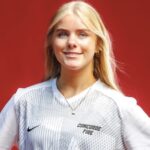ECNL in Depth, Part III: Evolution, evaluation, improvement
By Jimmy LaRoue
EDITOR’S NOTE: The Soccer Wire recently held wide-ranging conversations with several of the Elite Clubs National League’s most prominent coaches and executives. This is the final installment in a three-part series profiling the ambitious league. Links to the first two installments can be found at the end.
Here, ECNL president Christian Lavers, vice president Douglas Bracken and secretary Jason Dewhurst discuss the league’s focus on constant improvement to the competitive and organizational youth soccer models. Lavers is an attorney who also serves as FC Milwaukee’s technical director and ECNL director, and executive vice president at U.S. Club Soccer. Bracken is director of coaching for Ohio Elite Soccer Academy, and Dewhurst is the founder and director of coaching of FC Stars of Massachusetts.
The ECNL is taking a proactive approach to trying to change the game for the long term benefit of elite players. As an example, this year the league implemented a substitution rule preventing substituted players from re-entering in conference games for Under-18 age groups, and the plans are to expand the policy to the U-16 and U-17 age groups next season.
Substitution rules are one of the core ways in which player development can be improved, as limited re-entry substitution forces coaches and players to learn how to manage a full game, it slows the speed of the game to allow more thought and creativity, and insures that players play for extended minutes, not isolated 5-10 stints at a time where they are often hidden.
Currently, the league intends not to impose the rule at national events in order to allow for more flexibility at these major college scouting showcases. For now, at those events, the limited-substitution rules not allowing reentry for the rest of a half will remain in effect at all ages.
In the U-14 age group, ECNL leaders are in discussions to add more games to fill this age group’s competitive calendar, but without extending the clubs too much with regard to travel.
Overall, ECNL schedules are regionally organized, but there are differences from conference to conference. For instance, for the clubs that are distant from other clubs in their conference, the ECNL attempts to place a national event in or near that state to help minimize travel costs for at least one major event.
The current schedule of 30 games allows for each training session and game to be more meaningful.
“It doesn’t do anybody any good to play 60 or 70 games in a year,” Lavers noted.
Hurdles
The trio acknowledges that they have faced obstacles along the way, and that remains to this day.
“To say that we don’t face politics or hurdles from outside would be not true, of course,” Bracken said. “When you have national events that change the landscape by taking 66 of the best teams in a given age group out of the mix to play in other events, some people will be unhappy.”
They acknowledge disagreements along the way internally as well, but once decisions are made, the leadership walks out in a unified front, and they say there’s not the level of bureaucracy of other organizations.
“One of the reasons we’re here is to help U.S. Soccer identify players, and to help create a structure that make players better at every level – eventually for the youth national teams,” Lavers said. “We talk to U.S. Soccer leaders all the time to ask, ‘What would you do? What do you want to see in the landscape?’ We’re very open to their input on changes in direction and changes in what we do.”
They say U.S. Club Soccer has been a key partner and ally in the ECNL’s growth, giving the ECNL the freedom to do what the organization feels is necessary and helping pave the way for its success.
Dewhurst said it is up to the organization to make sure that standards remain high. Lavers said the clubs have trusted that the ECNL is going to do what we have said we will do, because they were taking a “leap of faith with us.”
“We have to keep everybody believing in what we’re doing and moving in the direction that we think is the right direction to move,” Lavers said. “That’s always a challenge, and that’s going to be an ongoing challenge in this organization.”
Benchmarks of success
Dewhurst said ECNL creates standards and makes sure it lives up to them.
“I think the difference is this league is run by soccer people, technical people who truly believe in what’s best for players, and work with them every day,” Lavers said. “I think that’s one of the major differences, and that’s why we have been successful.”
Bracken said the downfall of the old system was the unwillingness to change.
“If you get into a situation where you think you’ve got it all solved and you don’t have to change, make it better, continue to self-evaluate, then what happens is exactly what happened,” Bracken said. “That’s why the [U.S. Soccer Development Academy] came. That’s why the ECNL came, because the existing system was old and antiquated and full of red tape and bureaucracy, and people that are professional people just got tired of it. And that’s how U.S. Club also developed.”
There’s more respect among directors of coaching and clubs, they say, and a familiarity among their coaches as peers, not just coaches and teams they’re trying to beat. They compete to win on the field, but off the field they are colleagues looking for ways to elevate the game.
But are the games better than they were before?
Lavers says yes. Bracken and Dewhurst say there’s a different aura and importance to the games, and the feedback from college coaches has been extremely positive, most notably in regards to the speed and intensity of play. Ironically, Bracken said even with more coaches watching games, that his players are more oblivious to them and more focused on the competition on the field.
In the old model of showcase tournaments having no bearing on any league standings, the trio agreed players were far more aware of coaches watching, often to the detriment of their teams as they tried to show off or lost their nerve over-thinking things. Now, they believe college coaches get to see players in a more realistic environment that better simulates the game-by-game competitive importance of college play.
“The players have to be better because the game’s faster,” Lavers said. “And their skill level has to get higher. We’re not going to pretend we’ve changed the world in five years. And anybody who does, I wouldn’t trust. But when you have players of similar levels competing against each other more, in a meaningful environment, you’re going to get better than players who are at vastly different levels in games that are less competitive.
“If you’ve looked at the level of our games, they’re faster, they’re more physical, the ideas are getting better. It’s going to be a process, but hopefully we look back three years from now from this and we say, ‘Gosh, we’re light years ahead of where we were.’”
[ + ECNL in Depth, Part II: League execs explain unique governance, talent ID processes ]











